Selecting the wrong sliding system causes big problems. These issues cost you time and money. Here are the key points to consider for a perfect choice every time.
When choosing a sliding door system, check the door’s weight and size. Then, consider the frame material for durability. Also look at energy efficiency, security features, and overall style. These factors ensure the system supports the door properly and meets your project’s needs.
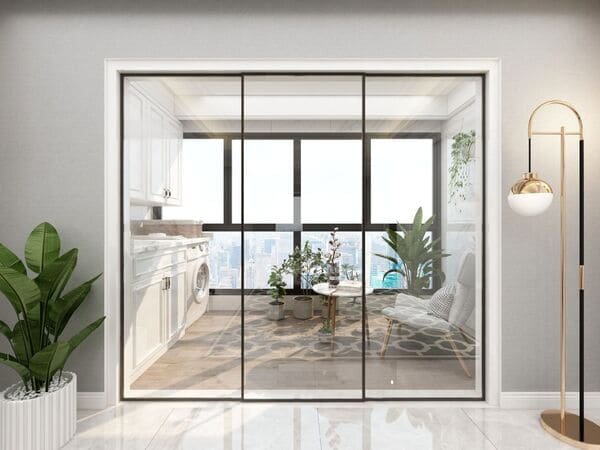
Getting the right system is more than just a quick check. There are many details that can make or break a project. I’ve spent years in this business as a factory owner, and I’ve learned that asking the right questions is the most important step. Let’s break down some common questions I hear from professional buyers like you.
What to look for when buying a sliding door?
All sliding doors look the same in a catalog. But choosing based on price alone is risky. Here are the key parts to check for true quality and value.
Look for high-quality rollers and tracks for smooth operation. Check the frame material for strength and weather resistance. Also, verify the glass is energy-efficient and the lock is secure. These elements define the door’s long-term performance and are critical for any project’s success.
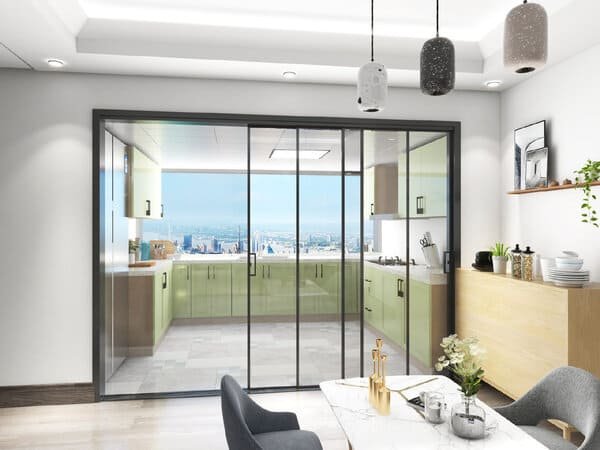
The Heart of the System: Rollers and Track
The most important part of any sliding door is the hardware it runs on. A heavy door needs robust rollers with high-quality bearings. I always tell my clients to look at the material. Are the rollers made of durable nylon1 or cheap plastic? Are the bearings sealed to keep out dust? The track is just as important. A well-designed aluminum track will resist corrosion and provide a smooth glide for years. At my factory, we focus heavily on the engineering of these components because we know they are the first things to fail if not made correctly.
Beyond the Hardware: Frame and Glass
Once you are happy with the hardware, look at the door itself. The frame gives it structure and weather sealing. The glass impacts energy efficiency2 and security. For many of my B2B clients, the ability to source a system that works with different frame materials is key.
| Feature | What to Check | Why It Matters |
|---|---|---|
| Rollers | Material (Nylon, Steel) & Bearings | Durability and smooth operation |
| Track | Material (Aluminum) & Profile | Corrosion resistance and stability |
| Frame | Material (Aluminum, Vinyl, Wood) | Strength and insulation |
| Glass | Type (Double-Pane, Laminated) | Energy efficiency and security |
This systematic check ensures you are not just buying a door, but a complete, reliable system for your project.
What is the common problem with sliding doors?
Your new sliding door sticks after just a few months. This means unhappy customers and expensive service calls. Let’s look at the main cause and how you can avoid it.
The most common problem with sliding doors is difficult operation, usually caused by dirty or damaged tracks and worn-out rollers. Debris in the track obstructs the wheels, while old rollers can break or seize, making the door hard to move. Regular cleaning and quality hardware are key.
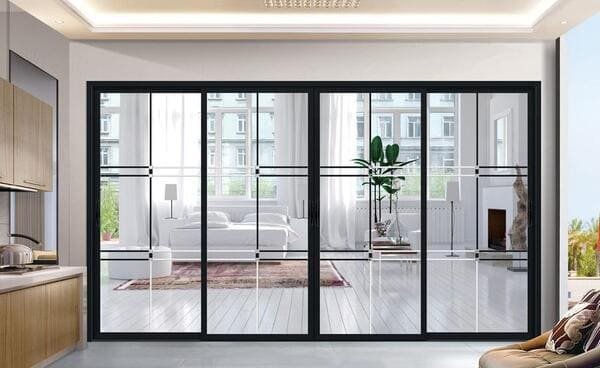
The Main Culprit: Track and Roller Failure
In my years of manufacturing sliding door systems, I have seen it all. The number one complaint I hear from distributors and contractors is about doors that become hard to slide. The cause is almost always the same: a problem with the track or the rollers3. Dirt, pet hair, and small debris get stuck in the bottom track. Over time, this buildup can derail the rollers or even damage them. Cheap rollers made from brittle plastic will crack under the weight of a heavy door. Once a roller fails, the door’s weight rests directly on the track. This causes friction and makes it nearly impossible to move.
How to Prevent This Common Issue
Prevention starts at the purchasing stage. As a buyer, you need to specify hardware rated for the door’s specific weight. A heavy wooden door needs a different roller system than a lightweight cabinet door.
Here are some things to focus on:
- Material Quality4: Insist on stainless steel or high-grade nylon rollers.
- Sealed Bearings: They prevent dirt from getting inside the mechanism.
- Track Design: Look for tracks that are easy to clean and resist denting.
When we work on ODM projects at opensliding, we match the roller capacity directly to the client’s door specifications. This simple step prevents 90% of future problems and ensures a long, trouble-free life for the door.
Which is better: mild steel or Aluminium sliding doors?
Choosing between steel and aluminum frames is tough. The wrong material can mean rust or installation problems. Let’s compare them so you can choose with confidence.
Aluminum is generally better for most sliding door applications. It is lightweight, naturally corrosion-resistant, and can be easily formed into complex, thermally efficient profiles. Mild steel is stronger but heavier and requires protective coatings to prevent rust, making it less ideal for exterior use.
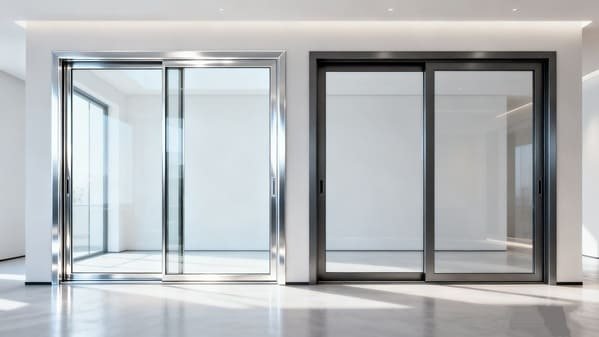
Aluminum: The Modern Standard
For most projects I supply hardware for, aluminum is the clear winner for frames and tracks. The biggest advantage is its natural resistance to corrosion5. You do not have to worry about rust, even in coastal areas. It is also very lightweight. This makes installation easier and puts less stress on the building’s structure and the roller hardware. From a manufacturing perspective, aluminum can be extruded into very precise and complex shapes. This allows for features like integrated thermal breaks, which greatly improve energy efficiency. For B2B buyers like you, this design flexibility6 is a huge plus.
Mild Steel: Strength at a Cost
Mild steel does have its place. Its primary advantage is strength and rigidity. For extremely large or heavy security doors, steel might be the only option. However, it comes with big downsides. It is much heavier than aluminum, so it needs more robust hardware and a stronger structure to support it. The main problem is rust. Mild steel must be painted or galvanized. If that coating is scratched, rust will quickly form.
| Aspect | Aluminum | Mild Steel |
|---|---|---|
| Weight | Lightweight | Very Heavy |
| Corrosion | Excellent resistance | Prone to rust |
| Strength | Good | Excellent |
| Maintenance | Low | High (requires coating) |
| Cost | Moderate | Lower (initially) |
How to pick a sliding glass door?
You think you’ve found the perfect sliding glass door. But the hardware and frame matter just as much. Here is a simple checklist to ensure you choose correctly.
To pick a sliding glass door, first evaluate the glass for energy efficiency (double-pane, Low-E coating). Then, check the frame material for durability. Finally, ensure the hardware system, including rollers and locks, is high-quality and can support the glass door’s weight for smooth, secure operation.
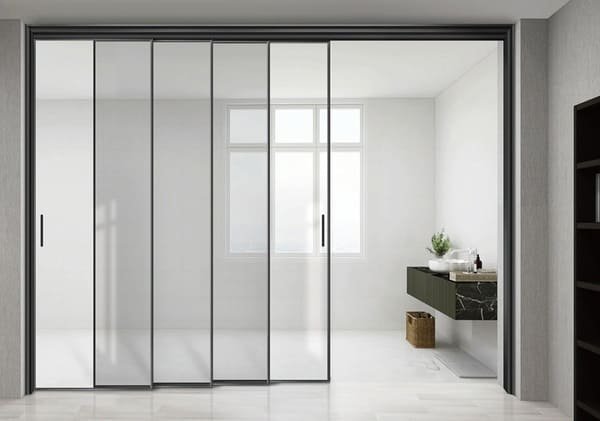
Evaluating the Glass Itself
When dealing with a sliding glass door, the glass is the main feature. But not all glass is the same. For safety, you must choose between tempered or laminated glass. Tempered glass shatters into small, blunt pieces. Laminated glass holds together when broken. For energy efficiency, double-pane or even triple-pane glass is standard in colder climates like Canada. Look for a Low-E coating7 on the glass. This is a tiny metallic layer that reflects heat. It keeps heat inside in the winter and outside in the summer. This one feature can make a big difference in a building’s energy bills.
Don’t Forget the Support System
A large panel of double-pane glass is extremely heavy. This is where many projects go wrong. A buyer might select a beautiful door but pair it with a standard, light-duty roller system. That system will fail. As a hardware manufacturer, this is my area of expertise. We design heavy-duty lifting wheels and track systems for these doors. You must check the weight rating of the hardware. Make sure it is more than the weight of the door panel. A good rule is to choose a system rated for at least 25% more than the door’s actual weight. This ensures a long life of smooth, effortless operation.
Conclusion
Choosing the right sliding door system means checking the hardware, frame, and glass. Focus on these details to ensure quality, durability, and smooth operation for your project.
Explore the advantages of durable nylon for sliding door rollers to ensure longevity and smooth operation. ↩
Learn how different glass types impact energy efficiency, crucial for making informed choices in door systems. ↩
Understanding the common issues with tracks and rollers can help you choose better sliding door systems and avoid future problems. ↩
Exploring the significance of material quality can guide you in selecting durable and reliable sliding door components. ↩
Explore this link to understand how corrosion resistance enhances material longevity and performance. ↩
Discover why design flexibility is crucial in manufacturing, leading to innovative solutions and efficiency. ↩
Learn how Low-E coating can significantly reduce energy bills by enhancing insulation in your glass installations. ↩

